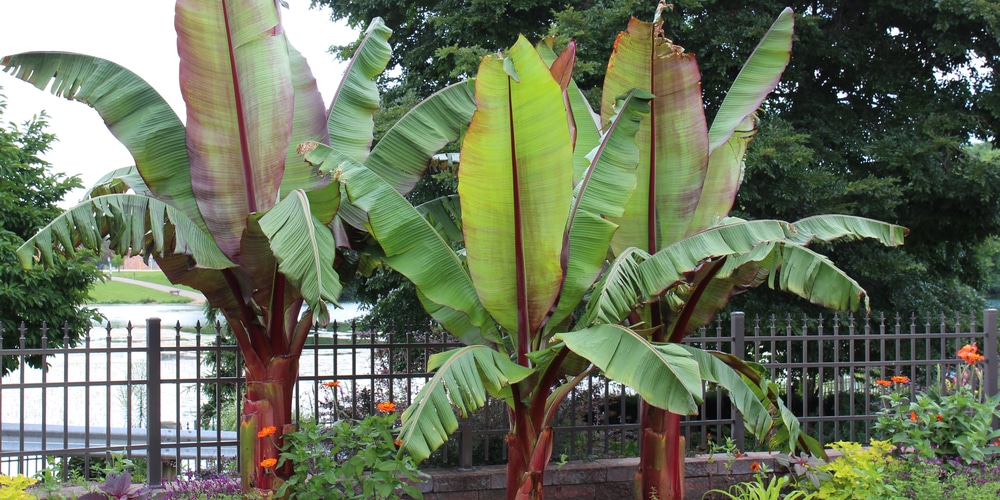The sight of banana trees with their towering stems, huge leaves, and hanging clusters of fruit brings a tropical and exotic feeling to any landscape. But, what do you do when your banana tree dies or becomes overgrown, and you need to get rid of it?
Whether you’re dealing with a single tree or an entire grove, the process of killing banana trees is not as simple as chopping them down. Because the plants are fast-growing and have a large root system, you’ll need to put some effort into ensuring that the tree is completely destroyed.
Things to Know Before Killing a Banana Tree
Before we get into the different ways you can kill a banana tree, there are a few things you should keep in mind.
First, banana trees are not typically considered invasive, but they can become a problem in some areas. If you’re dealing with an overgrown or dying tree on your property, it’s best to check with your local authorities to see if there are any regulations or permits required for removal.
Second, banana trees are fast-growing. This means that even if you’re successful in killing the tree, you’ll need to be prepared to deal with the regrowth.
To prevent this, you’ll need to remove the stump and as much of the root system as possible. Their roots can reach up to 5 feet deep and can spread up to 30 feet wide. That’s a large area to deal with, so it’s essential to have a plan in place before you start.
How to Kill a Banana Tree: 3 Ways
Now that you know what you’re up against let’s take a look at how to kill a banana tree. These methods will target the roots, which are the most important part of the plant to destroy.
Herbicides
One of the most difficult aspects of dealing with banana trees is the presence of rhizomes. Underground, these thick, fleshy roots can spread rapidly and send up new shoots, making it difficult to completely remove the tree. This is why it’s not enough to just cut down the tree. This is rendered useless as the underground rhizomes will continue to sprout new growth.
The best way to deal with this is to use an herbicide that contains glyphosate. This has been the long-standing standard for killing banana trees and other tough, fast-growing plants. Glyphosate will kill the tree and the roots, preventing regrowth.
To use glyphosate, you’ll need to cut down the tree as close to ground level as possible. Depending on the tree size, you may need to use a chainsaw. Be sure to wear appropriate safety gear when using power tools. With the tree gone, you’ll be able to better access the root system.
Mix the glyphosate according to the instructions on the packaging and apply it directly to the roots. You can do this with a pump sprayer or a wand attachment. Be sure to soak the roots thoroughly. You may need to reapply the herbicide every few weeks to keep new growth from sprouting.
Manual Removal
By far, manual removal is the most labor-extensive method, but if you don’t want to deal with chemicals, it’s an option. The first step is to cut down the tree leaving about 1-2 feet of the trunk remaining.
Around the plant, dig a trench that’s about a foot deep. This will help to loosen the roots and make them easier to remove. Start digging up the roots, working your way out from the tree’s trunk. You may need a shovel, pickaxe, or other tools to get all the roots.
Take note of the clump of rhizomes in the center of the root system. This is where new growth will sprout, so removing as much of it as possible is important. Additionally, look for the pseudostem, which is the woody stem that supports the leaves. This, too, will need to be removed. Chop it off with a machete or similar tool.
There’s no particular technique for removing the roots. Just keep digging until you’ve removed as much of the root system as possible. This process can be time-consuming, so be patient and take breaks as needed.
Chemical Methods Like Kerosene
If you’re dealing with multiple banana trees or can’t deal with all the manual labor, you may want to consider using a chemical method like kerosene. According to agricultural experts, the use of kerosene may be deemed safe. However, it’s not typically suggested in a residential setting.
Kerosene is a highly flammable substance, so there’s always the risk of fire when using it. If you do decide to use kerosene, be sure to take all necessary safety precautions.
To use kerosene, pour it directly onto the stump and roots. You’ll need to saturate the area entirely for this to work. Once the kerosene has been applied, light it on fire and let it burn. The fire will spread to the roots, killing them.
Final Thoughts
No matter which method you decide to use, targeting the roots and getting out the rhizomes as much as possible is key to preventing regrowth.
Be patient – it may take several treatment sessions to completely kill the tree. With manual removal, it may be necessary to remove the roots a few times before they’re all gone. But eventually, you’ll be able to rid your yard of those banana trees for good.

